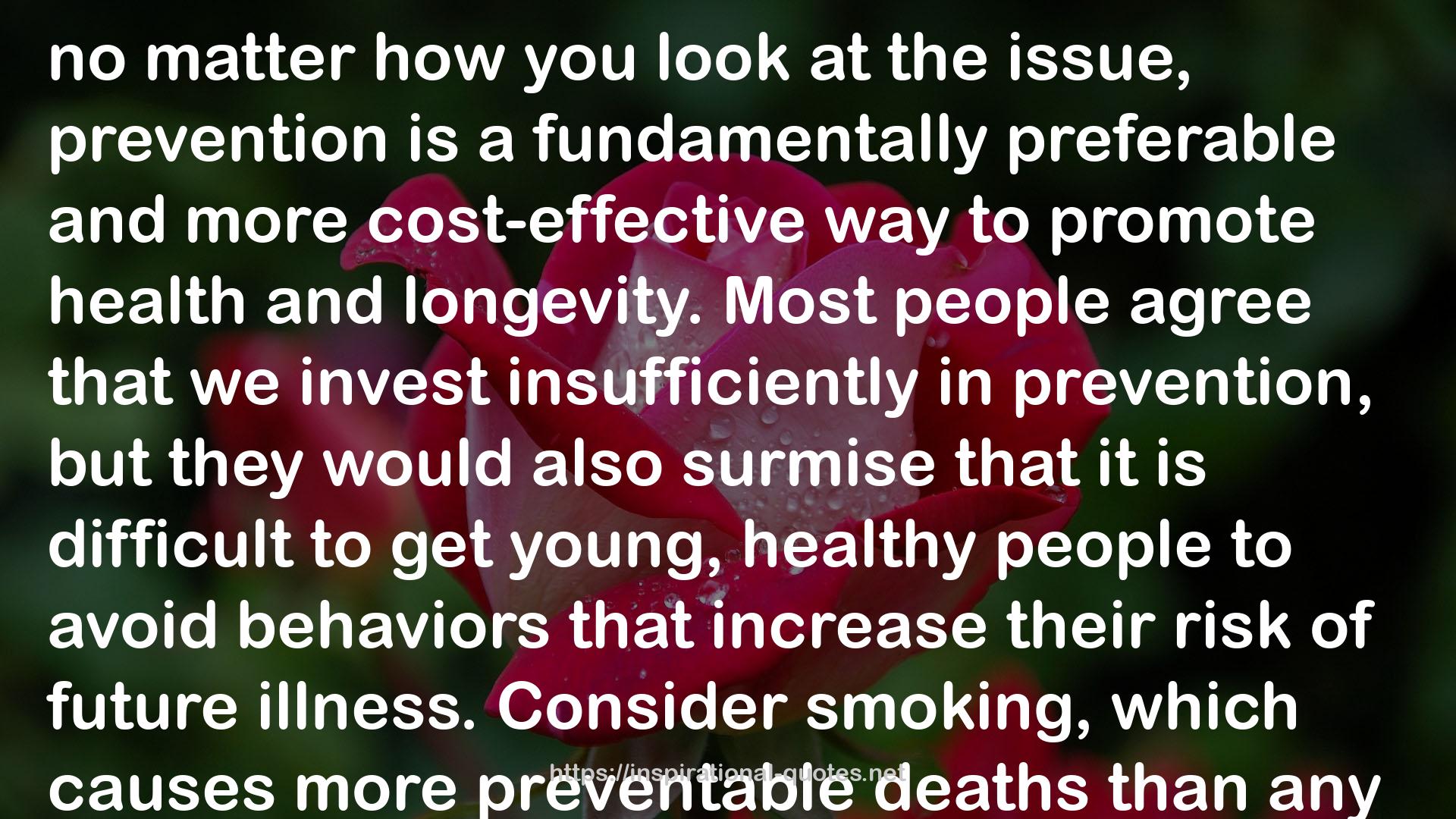" no matter how you look at the issue, prevention is a fundamentally preferable and more cost-effective way to promote health and longevity. Most people agree that we invest insufficiently in prevention, but they would also surmise that it is difficult to get young, healthy people to avoid behaviors that increase their risk of future illness. Consider smoking, which causes more preventable deaths than any major risk factor (the other big ones being physical inactivity, poor diet, and alcohol abuse). After prolonged legal battles, public health efforts to discourage smoking have managed to halve the percentage of Americans who smoke since the 1950s.19 Yet 20 percent of Americans still smoke, causing 443,000 premature deaths in 2011 at a direct cost of $96 billion per year. Likewise, most Americans know they should be physically active and eat a healthy diet, yet only 20 percent of Americans meet the government’s recommendations for physical activity, and fewer than 20 percent meet government dietary guidelines.20 There are many, diverse reasons we are bad at persuading, nudging, or otherwise encouraging people to use their bodies more as they evolved to be used (more on this later), but one contributing factor could be that we are still following in the footsteps of the marquis de Condorcet, waiting for the next promised breakthrough. Scared of death and hopeful about science, we spend billions of dollars trying to figure out how to regrow diseased organs, hunting for new drugs, and designing artifical body parts to replace the ones we wear out. I am in no way suggesting that we cease investing in these and other areas. Quite the contrary: let’s spend more! But let’s not do so in a way that promotes the pernicious feedback loop of just treating mismatch diseases rather than preventing them. In practical "
― Daniel E. Lieberman , The Story of the Human Body: Evolution, Health, and Disease
